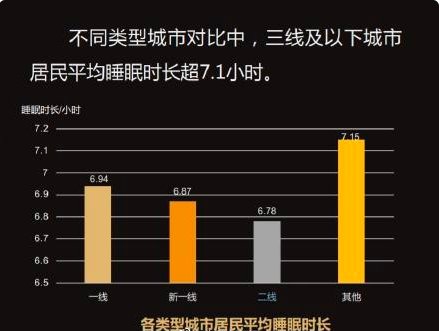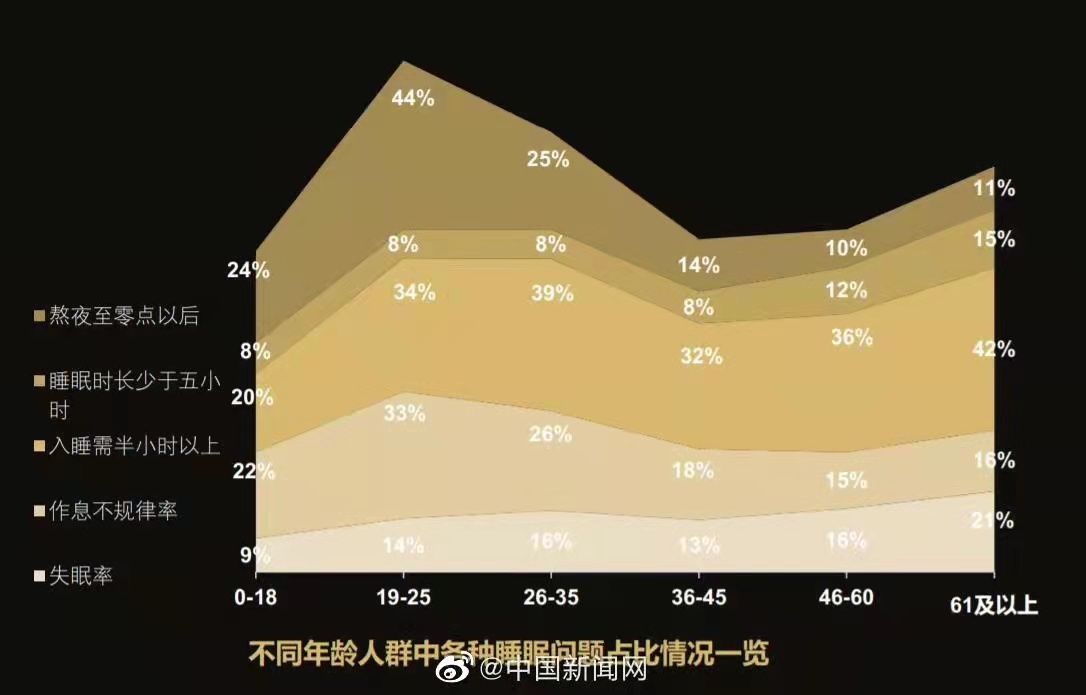On the eve of World Sleep Day in 2022, the China Sleep Research Association and other institutions released the “2022 White Paper on Healthy Sleep for Chinese Nationals” (hereinafter referred to as the “White Paper”). According to the survey, nearly 3/4 of the respondents had trouble sleeping, and difficulty falling asleep was the number one problem. Residents of first-tier cities go to bed the latest, and residents of third-tier cities and below sleep the earliest. The average sleep time of residents in first-tier cities is 6.94 hours; in new first-tier cities, it is 6.87 hours; in second-tier cities, it is 6.78 hours; and in third-tier cities and below, it is 7.15 hours. The proportion of people who feel that they sleep poorly or very poorly in second-tier cities is significantly higher than in other cities. People in Tibet have the longest average sleep time at 7.66 hours. In Shanxi, Chongqing, Anhui, and Guangdong provinces, more than 60% of the respondents often take lunch breaks.


From the perspective of age distribution According to the “White Paper” survey, 44% of young people aged 19-25 stay up late until after midnight, 42% of the elderly spend more than half an hour falling asleep, and the insomnia rate is as high as 21%. Young adults aged 19-35 are the age group with high incidence of sleep problems, and poor sleep has gradually become a common pain point for young people.

The sleep of the student group is of particular concern. Among the high school students surveyed, the average sleep time was only 6.5 hours, the average sleep time of the surveyed junior high school students was 7.48 hours, and that of elementary school students was 7.65 hours. At the same time, the “White Paper” also pointed out that more than 60% of the surveyed teens use their sleep time to play mobile phones, play games and watch dramas. Only 27% of the teens surveyed compress their sleep time to do homework and study. The above-mentioned white paper pointed out that after the reduction of learning pressure, many students allocated their sleep time to electronic products and entertainment, and entertainment replaced learning pressure, which became the primary reason for teenagers to go to bed late.
It is understood that the “White Paper” conducted a survey on citizens of 31 provinces (autonomous regions and municipalities) and Hong Kong, Macao and Taiwan, and collected more than 11,000 questionnaires, of which 9,082 were valid. Among them, minors aged 0-18 accounted for 12%. Primary school students in the “White Paper” are 6 to 11 years old, junior high school students are 12 to 14 years old, and high school students are 15 to 17 years old.
In March 2021, the Ministry of Education issued the “Notice on Further Strengthening the Sleep Management of Primary and Secondary School Students”, clearly requiring that the sleep duration of primary school students, middle school students and high school students should reach 10 hours, 9 hours and 8 hours respectively. Hour. In July of the same year, the “double reduction” policy was introduced. The “White Paper” shows that after the introduction of these two policies, the sleep duration of 60% of the surveyed primary and secondary school students has increased to varying degrees. The proportion of primary and secondary school students aged 6-18 who sleep for 8 hours or less is 67.03%. The “White Paper on Sleep for Chinese Adolescents and Children” released in 2019 shows that this data is 62.9%, an increase of nearly 4%.

“White Paper” said that while the average sleep time of 60% of the surveyed primary and secondary school students increased, the proportion of sleep less than 8 hours The ratio is also increasing, indicating that the difference in sleep duration among primary and middle school students is decreasing, but the overall duration is still insufficient.
Source: Comprehensive from China Youth Daily, China News Network
Picture: China News Network Official Weibo
Editor: Peng Dan
Responsible Editor: Lu Zhengming